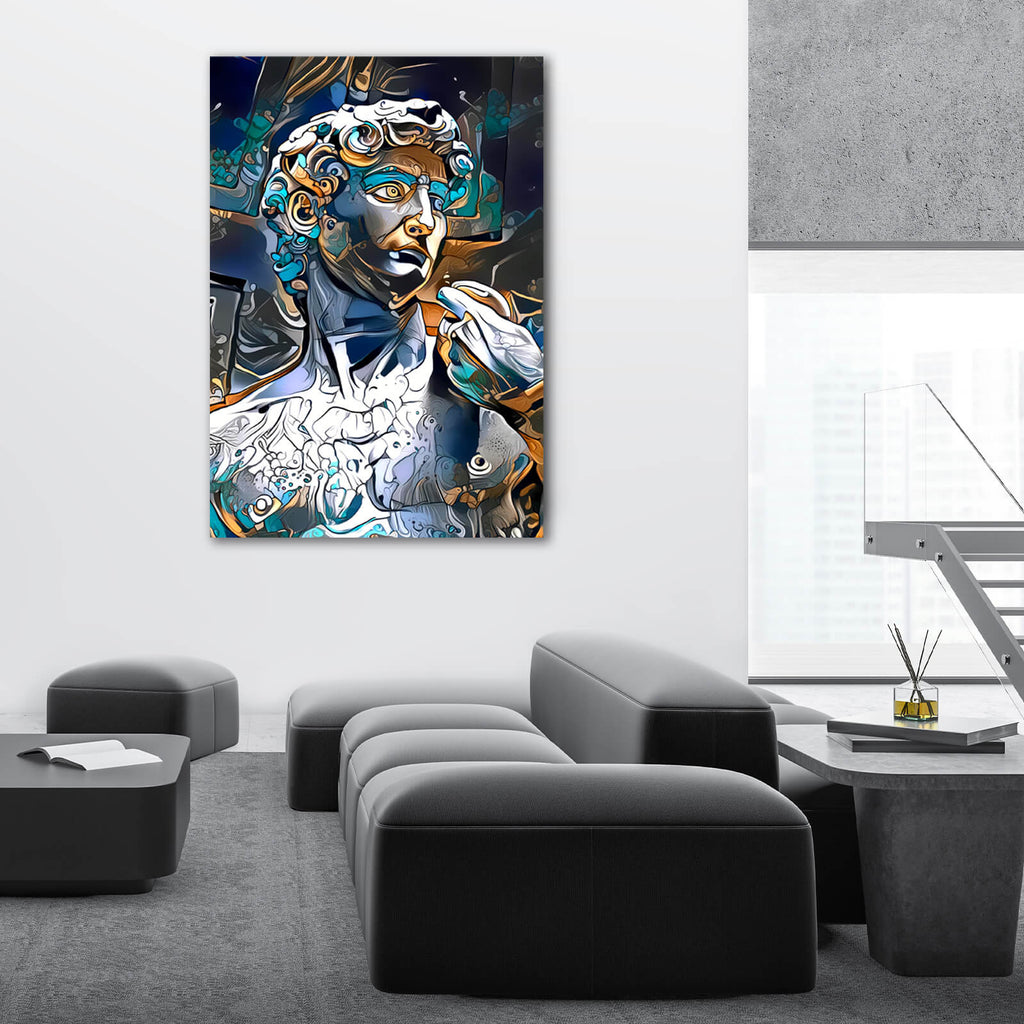Comment l’art impacte-t-il le monde ?
Jul 05, 2022

En tant qu’êtres humains, nous avons besoin de créer. Depuis les premières formes de peintures rupestres jusqu’aux plus grandes œuvres d’art de l’histoire, les gens ont utilisé l’art pour s’exprimer et faire passer un message. Mais l’art a-t-il vraiment un impact sur le monde ? Certains disent que l’art n’est rien d’autre qu’un luxe, quelque chose qui n’a pas d’importance dans le grand schéma des choses. Cependant, je crois que l’art est l’un des outils les plus puissants dont nous disposons. Il peut changer les mentalités, déclencher des mouvements et faire une différence dans la vie des gens. Alors, quel est l’impact de l’art sur le monde ? Je pense que la réponse est claire : l’art est important. Dans cet article de blog, nous discuterons des différentes façons dont l’art influence le monde qui nous entoure. Nous explorerons également l’importance de l’art dans notre société et la façon dont il façonne notre culture. Restez à l’écoute pour en savoir plus !
1. L'histoire de l'art
L’art existe depuis le début de l’histoire humaine. Les premiers exemples d’art étaient probablement des peintures sur les murs des grottes, réalisées avec des pigments naturels comme l’ocre et le charbon de bois. Au fil du temps, les hommes ont commencé à sculpter des objets à partir d’os, de pierre et de bois. Ils ont fini par apprendre à fabriquer des outils en métal, ce qui leur a permis de créer des motifs encore plus complexes. À l’époque où les premières civilisations sont apparues, l’art était devenu un élément essentiel de la culture humaine. Il était utilisé pour décorer les maisons et les espaces publics, et il jouait un rôle dans les cérémonies religieuses. Aujourd’hui, l’art continue d’occuper une place importante dans nos vies. On le trouve dans les musées et les galeries, mais il est également de plus en plus souvent créé par des gens ordinaires à l’aide de la technologie numérique.
L’art est souvent considéré comme l’histoire des maîtres et de leurs chefs-d’œuvre. Les grands artistes sont reconnus pour leurs styles et leurs techniques individuels, et leurs œuvres sont appréciées par les musées et les collectionneurs privés. Mais l’art est bien plus que cela. C’est aussi l’histoire de la façon dont les humains ont interagi avec leur environnement à travers les âges. En étudiant l’histoire de l’art, nous pouvons mieux comprendre les cultures qui l’ont créé et les personnes qui en ont été affectées. Nous pouvons voir comment l’art a évolué au fil du temps en réponse aux changements politiques, sociaux et économiques. Et nous pouvons apprendre des erreurs et des succès des artistes du passé pour créer nous-mêmes quelque chose de nouveau et de beau. Ainsi, que vous regardiez un tableau de Léonard de Vinci ou une sculpture de Banksy , n’oubliez pas que vous voyez plus qu’un simple objet esthétique : vous voyez l’histoire de l’humanité.
2. Comment l’art reflète-t-il l’époque et la culture dans laquelle il est créé ?
L’art est souvent considéré comme le reflet de l’époque et de la culture dans laquelle il est créé. C’est particulièrement vrai pour les arts visuels, qui peuvent donner un aperçu des valeurs, des croyances et des traditions d’une société particulière. Par exemple, les peintures de l’Europe médiévale représentent souvent des scènes religieuses ou des légendes, tandis que les peintures de la Renaissance représentent souvent des sujets profanes tels que des membres de la famille royale ou des créatures mythologiques. De même, les mouvements artistiques modernes tels que le cubisme et l’expressionnisme abstrait ont été influencés par les bouleversements politiques et sociaux du début du XXe siècle. En bref, l’art reflète l’époque et la culture dans laquelle il est créé parce qu’il est le produit de cette époque et de cette culture.
L’art a toujours été le miroir des époques et des cultures dans lesquelles il a été créé. Des peintures stylisées de l’Égypte antique aux somptueux châteaux baroques d’Europe, l’art reflète les valeurs et les croyances des sociétés qui l’ont produit. C’est particulièrement vrai pour l’art moderne sur toile , qui commente souvent directement les problèmes politiques et sociaux de l’époque. Par exemple, le massacre de Nochistlán au Mexique a inspiré une série de peintures de Diego Rivera qui dépeignent la brutalité de l’événement. De même, les attentats du 11 septembre ont donné lieu à une vague d’œuvres d’art explorant les thèmes de la perte, du deuil et de la résilience. Dans chaque cas, l’art offre une fenêtre unique sur la culture et l’histoire de son époque.
3. Quelles sont quelques œuvres d’art célèbres et quelle est leur importance ?
Les œuvres d'art célèbres nous ouvrent une fenêtre sur le passé, nous montrent comment les gens vivaient et ce qui était important pour eux. Par exemple, la peinture funéraire égyptienne antique connue sous le nom de « La procession des nobles » représente un groupe de nobles voyageant à travers le désert. La peinture est importante non seulement pour ses couleurs et sa composition saisissantes, mais aussi pour ce qu'elle nous dit sur la société égyptienne de l'époque. La peinture funéraire nous montre que même au milieu d'un paysage aride, les Égyptiens étaient capables de créer des œuvres d'art magnifiques et complexes. Elle nous rappelle que même dans les moments difficiles, les gens ont la capacité de créer de la beauté. Parmi les autres œuvres d'art célèbres, citons « La Joconde » de Léonard de Vinci, célèbre pour son sourire mystérieux, et « La Nuit étoilée » de Vincent van Gogh, l'une des peintures les plus emblématiques de l'ère moderne. Ces œuvres d'art sont importantes non seulement pour leur mérite artistique, mais aussi pour la façon dont elles en sont venues à représenter les cultures qui les ont créées.
4. L'impact du Street Art sur le monde
Le street art est un type d'art visuel que l'on retrouve dans les espaces publics tels que les murs, les bâtiments et les trottoirs. Contrairement aux formes d'art traditionnelles, le street art est créé dans le but d'être vu par le grand public. Bien que le street art puisse prendre de nombreuses formes différentes, il comprend souvent des graffitis colorés et créatifs. Le street art existe depuis des siècles, certains des premiers exemples remontant à la Rome antique. Cependant, ce n'est qu'à la fin du XXe siècle que le street art a commencé à gagner en popularité auprès du grand public. Ces dernières années, le street art est devenu de plus en plus populaire dans le monde entier. De nombreuses villes accueillent désormais des festivals de street art et des groupes de touristes qui permettent aux visiteurs de voir certains des meilleurs street art du monde. Bien que le street art soit souvent associé aux zones urbaines, on le trouve dans les villes rurales et même dans les villages reculés. Le street art peut avoir un impact positif sur les communautés en procurant un sentiment d'identité et de fierté. Il peut également être utilisé pour sensibiliser aux problèmes sociaux et politiques. Le street art est souvent considéré comme une forme de rébellion contre les formes d'art traditionnelles, souvent considérées comme élitistes et inaccessibles. Pour beaucoup de gens, le street art est un moyen d'exprimer leur créativité et de partager leur voix avec le monde. Accrocher du street art sur une toile est un excellent moyen d'ajouter de la couleur et de la personnalité à n'importe quelle pièce.
Pour en savoir plus sur le street art, consultez notre guide unique : Qu'est-ce que le street art ? Guide complet sur le street art.
5. L’impact de l’art sur la santé ?
Ce n’est un secret pour personne que l’art peut avoir des effets thérapeutiques. Qu’il s’agisse d’écouter de la musique, de peindre un tableau ou d’écrire une histoire, l’art permet de libérer les émotions et peut nous aider à mieux nous comprendre nous-mêmes. Il existe désormais des preuves scientifiques qui soutiennent l’idée que l’art peut également améliorer notre santé mentale. Des études ont montré que l’art peut réduire le stress, augmenter l’estime de soi et même améliorer notre santé physique.
Par exemple, une étude a révélé que les participants qui avaient suivi un cours d'art avaient des niveaux de cortisol, l'hormone du stress, plus faibles que ceux qui n'avaient pas participé au cours. Une autre étude a montré que les patients atteints de la maladie d'Alzheimer qui avaient participé à un programme d'art avaient moins d'anxiété et de dépression que ceux qui n'avaient pas participé au programme. De plus, il a été démontré que l'art renforce le système immunitaire et améliore la santé physique globale.
Alors si vous vous sentez stressé ou déprimé, pensez à prendre un pinceau ou un stylo et laissez libre cours à votre créativité. Vous découvrirez peut-être que cela fait des merveilles pour votre santé mentale.
Derniers mots
Bien qu’il soit difficile de mesurer l’impact de l’art sur le monde, il est clair qu’il peut être profond. Qu’il s’agisse d’influencer les mouvements politiques ou de susciter la créativité chez les personnes de tous âges, l’art a la capacité de changer des vies et de rendre le monde plus beau. Prenez le temps d’explorer notre collection de street art sur toile et constatez par vous-même comment ces œuvres ont transformé non seulement nos murs, mais aussi nos esprits. Qu’en pensez-vous ? Quel est l’impact de l’art sur votre vie ?










